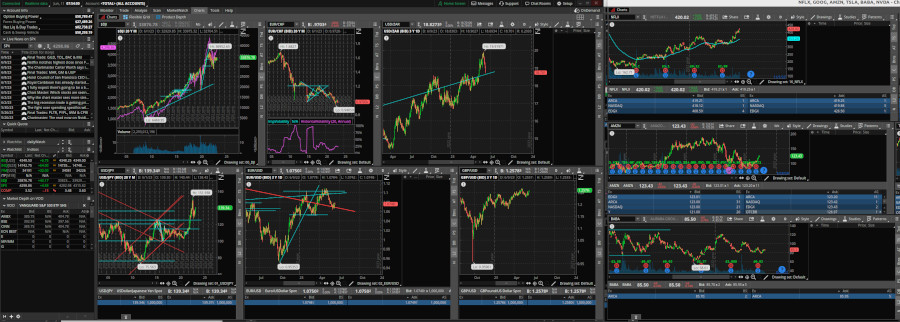In today’s dynamic and complex financial landscape, investors are constantly seeking ways to maximize their returns while minimizing risk. One popular investment strategy that has gained significant attention is index fund investing. Index funds offer a passive approach to investing, providing broad market exposure and diversification. This article will guide you through the art of index fund investing and equip you with strategies for achieving success in this field.
Discover the Secrets to Successful Index Fund Investing
Understanding Index Funds
What are Index Funds?
Index funds are a type of mutual fund or exchange-traded fund (ETF) designed to track the performance of a specific market index, such as the S&P 500 or the Nasdaq Composite. These funds aim to replicate the returns of the index they are tied to, providing investors with exposure to a broad range of securities within that index.

Benefits of Index Fund Investing
Index fund investing offers several advantages over actively managed funds. These include lower fees, broad market diversification, and the potential for consistent long-term returns. By mirroring the performance of a specific index, index funds remove the need for active stock selection and market timing, making them an attractive option for both novice and experienced investors.
Choosing the Right Index Fund
Types of Index Funds
Index funds are available for various asset classes, including stocks, bonds, and commodities. Some funds may focus on specific sectors or regions, while others provide exposure to the entire market. It’s crucial to understand the different types of index funds available and choose the ones that align with your investment goals and risk tolerance.
Evaluating Index Funds
When evaluating index funds, it’s essential to consider factors such as expense ratios, tracking error, and the fund’s history of performance. Additionally, examining the fund’s holdings, turnover rate, and fund manager’s expertise can provide valuable insights into the fund’s quality and potential returns.
Building a Diversified Portfolio
Asset Allocation
Building a well-diversified portfolio is crucial for long-term investment success. Allocating your investments across different asset classes, such as stocks, bonds, and real estate, can help mitigate risk and maximize potential returns. Determine your risk tolerance and investment objectives to create an asset allocation strategy that suits your needs.
Rebalancing Your Portfolio
Regularly reviewing and rebalancing your portfolio ensures that your investments remain aligned with your asset allocation goals. Rebalancing involves selling overperforming assets and buying underperforming ones to maintain the desired portfolio mix. This strategy helps manage risk and ensures that your investments stay on track.
Minimizing Costs and Expenses
Expense Ratios
Index funds are known for their low expense ratios compared to actively managed funds. An expense ratio represents the percentage of a fund’s assets used to cover operating expenses. By choosing index funds with low expense ratios, investors can minimize costs and retain a more significant portion of their investment returns.
Avoiding Load Fees
Load fees are sales charges or commissions applied to certain mutual funds. To reduce costs, investors should consider investing in no-load index funds that do not charge these fees. Avoiding load fees allows you to invest your money more efficiently and potentially generate higher long-term returns.
Long-Term Investing and Patience
The Power of Compounding
Index fund investing is ideally suited for long-term investors. The power of compounding enables investors to earn returns on both their initial investment and the accumulated returns over time. By staying invested in index funds for the long haul, you can harness the compounding effect and potentially grow your wealth significantly.
Riding Out Market Volatility
Stock markets are subject to volatility and short-term fluctuations. However, index fund investors can take advantage of the market’s long-term upward trend. Rather than reacting to short-term market movements, staying the course and remaining invested can help ride out market volatility and capture long-term market gains.
Monitoring and Reviewing Your Investments
Regular Portfolio Checkups
Regularly monitoring your index fund investments is essential to ensure they remain aligned with your financial goals. Conduct periodic portfolio checkups to assess the performance of your funds, review any changes in the market, and make adjustments if necessary. This proactive approach helps you stay informed and take timely action when required.
Adjusting Your Strategy
As your financial situation and goals evolve, it’s crucial to adjust your index fund investing strategy accordingly. Whether it’s modifying your asset allocation or exploring different types of index funds, being flexible and adaptable can optimize your investment outcomes over time.
Tax Efficiency Strategies
Understanding Capital Gains
Index fund investors should be aware of the tax implications of their investments. When you sell index fund shares at a profit, you may be subject to capital gains taxes. Understanding how capital gains taxes work and implementing tax-efficient strategies, such as holding investments for more extended periods or utilizing tax-advantaged accounts, can help minimize your tax burden.
Tax-Loss Harvesting
Tax-loss harvesting involves selling investments that have experienced losses to offset capital gains or reduce taxable income. Index fund investors can utilize this strategy during periods of market downturns to generate tax benefits. Consult with a tax professional to understand the rules and regulations surrounding tax-loss harvesting.
Emotions and Behavioral Biases
Avoiding Impulsive Decisions
Investing in index funds requires discipline and a long-term perspective. Emotions, such as fear and greed, can lead to impulsive decisions that may harm your investment performance. By maintaining a rational mindset, avoiding emotional biases, and adhering to your investment plan, you can overcome behavioral pitfalls and stay on track.
Staying Disciplined
Consistency and discipline are key to successfully mastering the art of index fund investing. Stick to your investment strategy, avoid chasing short-term market trends, and resist the temptation to make frequent changes to your portfolio. By staying disciplined and focused on your long-term goals, you increase your chances of achieving sustainable investment success.
Advantages of Dollar-Cost Averaging
Spreading Investment Risk
Dollar-cost averaging is a strategy that involves investing a fixed amount of money at regular intervals, regardless of market conditions. This approach allows you to buy more shares when prices are low and fewer shares when prices are high. By spreading your investments over time, you reduce the impact of market volatility and potentially mitigate the risk of making large investments at unfavorable prices.
Taking Advantage of Market Fluctuations
Dollar-cost averaging enables you to take advantage of market fluctuations and volatility. Instead of trying to time the market and make large lump-sum investments, this strategy allows you to invest consistently over the long term. By doing so, you buy more shares when prices are low, effectively lowering your average cost per share and potentially increasing your overall returns.
The Role of Professional Advice
Consulting with Financial Advisors
While index fund investing is a passive approach, seeking professional advice can still be beneficial. Financial advisors can help you assess your financial goals, determine the appropriate asset allocation, and provide guidance on selecting the right index funds. They can also provide ongoing support, monitor your investments, and help you navigate complex financial situations.
DIY vs. Professional Management
Deciding whether to manage your index fund investments yourself or seek professional management depends on your knowledge, expertise, and available time. While some investors prefer the hands-on approach of do-it-yourself investing, others may opt for professional management to ensure their investments align with their goals and to leverage the expertise of experienced professionals. Consider your comfort level, investment objectives, and resources when deciding which approach is right for you.
Conclusion
Mastering the art of index fund investing requires a combination of knowledge, discipline, and a long-term perspective. By understanding the fundamentals of index funds, choosing the right funds, building a diversified portfolio, minimizing costs, and staying disciplined, you can position yourself for investment success. Remember to monitor and review your investments regularly, employ tax-efficient strategies, manage your emotions, and consider seeking professional advice when needed. With dedication and patience, you can harness the power of index funds to achieve your financial goals.
Frequently Asked Questions (FAQs)
FAQ 1: Are index funds suitable for all investors?
Yes, index funds are suitable for a wide range of investors. Their low costs, diversification benefits, and long-term focus make them an attractive investment option for beginners and experienced investors alike.
FAQ 2: How do index funds compare to actively managed funds?
Index funds passively track specific market indexes, aiming to replicate their performance. In contrast, actively managed funds rely on fund managers’ expertise to select and manage investments. While active funds offer the potential for out-performance, they often come with higher fees and may struggle to consistently beat the market.
FAQ 3: Can I invest in index funds through my retirement account?
Yes, many retirement account options, such as 401(k)s and IRAs, offer index funds as investment choices. Investing in index funds through your retirement account can provide tax advantages and contribute to long-term wealth accumulation.
FAQ 4: What is the minimum investment required for index funds?
The minimum investment required for index funds can vary depending on the fund provider. Some index funds have low minimum investment requirements, while others may have higher thresholds. It’s essential to research different fund options and choose the one that aligns with your investment budget.
FAQ 5: Do index funds pay dividends?
Yes, index funds can pay dividends. The specific dividend distribution and frequency vary depending on the underlying securities held by the index fund. Dividends received from index funds can provide investors with additional income or the option to reinvest them for long-term growth.









